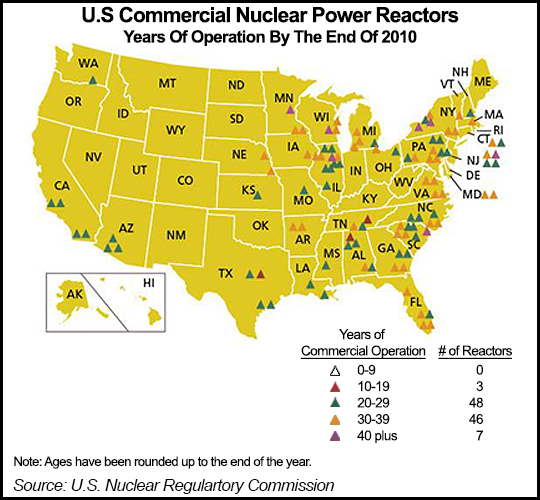Shale Daily | NGI All News Access
Shale Could Serve Nuke Waste Storage, USGS Researcher Says
The same shale formations that have fomented a U.S. domestic energy revolution may turn out to also be a panacea for the global conundrum of finding a long-term means of storing spent nuclear fuel and high-level waste, a geologist told the American Chemical Society’s (ACS) national meeting in Dallas Monday. The potential sites would be ones that are not currently or projected for oil/gas development.

Chris Neuzil, a geologist with the U.S. Geological Survey (USGS) in Washington, DC, thinks the shale formations could be long-term repositories for nuclear waste, and he cited the fact that France, Switzerland and Belgium already are working to use shale for that purpose. Neuzil is urging that the United States pursue a similar tact. Shale’s lack of permeability is the attraction.
Researchers in laboratories deep under ground and through shale boreholes are studying shale and other clay-rich rocks for this role. “Investigations have made it increasingly clear that many shales effectively restrict pre-fluid flow over extremely long spans of time,” Neuzil said.
The geologist’s research report is one of more than 10,000 presentations the ACS has booked for its 247th national conference this week. The society is the largest scientific group in the world with 161,000 members, 11,000 of whom are attending this year’s meeting.
Neuzil said that about 77,000 tons of spent nuclear fuel currently sit in temporary above-ground storage facilities and will remain a danger for tens of thousands of years or longer. “Surface storage for this length of time requires maintenance and security.”
The more above-ground storage at nuclear generating plants across the country, the more the risks have accelerated, and Neuzil points out that since 2009, when the U.S. government decided to abandon plans for a permanent nuclear waste storage facility at Yucca Mountain, NV, finding long-term storage sites has become critical.
As part of his work with the USGS, Neuzil is investigating a site in Ontario, Canada, with the Canadian Nuclear Waste Management Organization. It is the site of an Ontario Generation nuclear power complex that already has low and intermediate waste onsite, Neuzil told NGI‘s Shale Daily.
“The site has a lot going for it,” said Neuzil, adding that there are still a lot of considerations and breaking ground for an actual storage project is still a long way off. Boring samples and a site analysis have been completed, and a hearing was held in Canada earlier this year. A panel of the national Nuclear Waste Organization now must decide whether to move forward with more preliminary work, he said.
Shale rock formations “may be uniquely suited for nuclear waste storage” because of their near impermeability, Neuzil told the ACS meeting. That addresses one of the biggest risks associated with nuclear water — that it will invade local water tables.
“Years ago, I probably would have told you shales below the surface were also fractured,” he said. “But we’re seeing that that’s not necessarily true.
“Before the 1990s, few reliable data existed on fluid transport properties and pore flue movement in shales, but it is now apparent that many have extremely low permeability at spatial scales large enough to accommodate repositories.”
© 2024 Natural Gas Intelligence. All rights reserved.
ISSN © 2577-9877 | ISSN © 2158-8023 |
